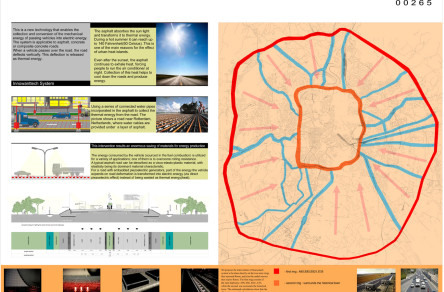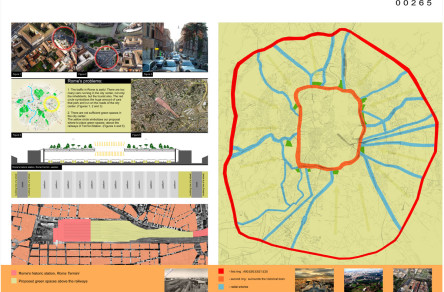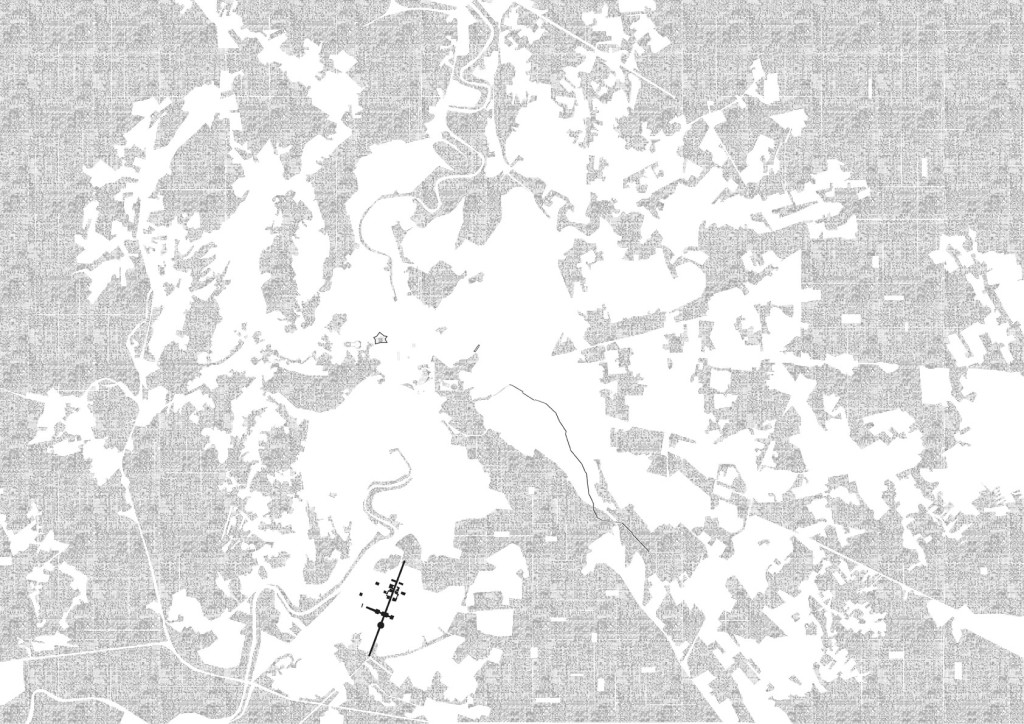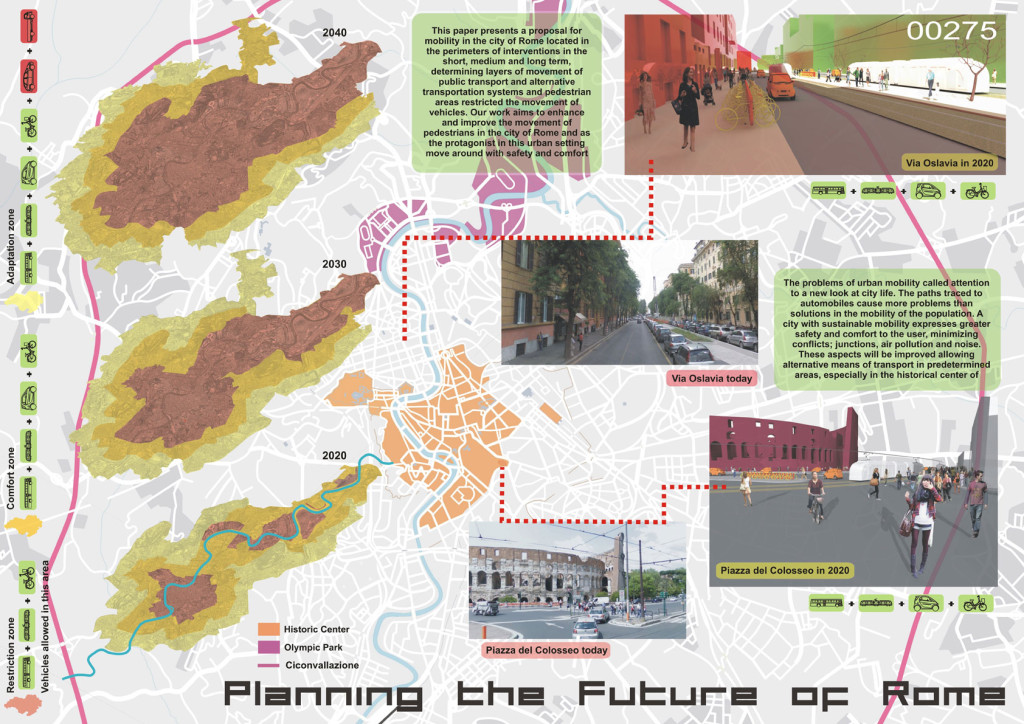Info:
Title: Rome - Code: 00265Contest: Rome / 2010
By: A. Varga- Kovács / S. Popa / B. Oláh / K. Hatházi
Views: 2293 Likes: 0
Votes:
JUERGEN MAYER H. 0 FRANCESCO LIPARI2 FELIPE ESCUDERO2 FRANCESCO GATTI 6 MICHAEL CATON 42.8
Rome


To understand the interventions that we are going to present, first we have to understand the subject of intervention. Rome is the third most visited city in Europe, this way we can infer a range of information that lead to the generation of this phenomenon, such as the heavy flood of tourists (20 million visitors annually), the vast cultural wealth expressed through monuments and architectural masterpieces.
To stimulate and support the contemporary city, our interventions are characterized in two main groups:
The first one is to give green energy back through consumption that road infrastructure has. This means the implementation of a system called Innowanttech System, which uses the exerted energy by vehicles on asphalt, converting it into electricity. When a vehicle travels on the road, it causes a deformation on the road. The system consists of introducing some piezoelectric elements under asphalt at a distance of 10 cm, which transforms this deformation into electricity that can be stored in batteries or can be used to illuminate directly the roads, also towns, parks, squares of public spaces and so on. The system works in any weather conditions and it does not consume additional space. There can be implemented 10 kms of highway in 48 hours, it produces 200 kW/h on a distance of 1 km, with a traffic of 500 cars per hour.
We propose the intervention of this system to be done directly on the two main rings that surround Rome, and also the radial arteries that lead to Rome. The first ring consists of the next highways: A90, E80, E821, E35, while the second one surrounds the historical town. The estimated calculations show that the 75 km long ring (the first one) can produce about 15000kw/h.
Areas that remain in the cross section of the road, we propose to introduce a series of tubing through which water consumption can pass. Due to the properties of asphalt storing heat that comes from solar radiation it will have a capacity to provide hot water at a temperature of 60 Celsius degree. Asphalt, unlike other materials, stores warmth also overnight, its temperature dropping no more than 5 degrees, while during a hot day it can reach the temperature of 85 degrees. This intervention results an enormous saving of materials for energy production and reduces costs over 50%, which will generate the increase of quality of social, economical and environmental lifestyle.
In the center of the city we propose an environmentally friendly intervention. Inside the historical ring of the city there are only a few green areas, especially the southeast part. This is mainly due to Rome’s historic station, Roma Termini, which occupies a significant area excluding the appearance of green spaces. Taking into consideration the station’s importance, its historical past and its large number of passengers (130 million per year) seems justified to cover the existing railways with a mega-structure, which can ensure sufficient green space for residents, passengers, and tourists as well. This intervention could equate the disproportioned distribution of green spaces in the city center.
The second intervention is based on the idea of promotingRomeas a city museum, but even more turning it into a huge historical museum. TodayRomehas a population of 4 million inhabitants and 20 million tourists/year, which means about 2.9 million cars circulating daily inRome. This prevents for the existing space to express its maximum capacity.
To solve the problem of urban agglomeration we can not take all the important buildings from their origin and move them to a new street where they can be sufficiently large, allowing the realization of a continuous and unperturbed flow. This way we concluded that adaptation to the tissue ofRome, to blend ancient and medieval with modern requirements is impossible inside the city. All the problems and demands thatRomehas, currently exceed any solution inside of the city. From here we started with a list of services that can function with the same efficiency outside the historical ring. (Parking lots, office buildings and services, green spaces, public spaces, commercial activities, activities for production, industrial activities, storage and transportation, etc). Thus conceiving a series of prototype objects to saveRome, where we would like to bring all the activities and services thatRomemay be missing inside the historical tissue. These prototype buildings will be located outside the historical ring, contested compulsory at least one of the radial arteries at the entrance ofRome. For example parking spaces for all accommodation units insideRomewill be in these items, where tourists leave their cars and they will be taken up by the unit in which they were booked, this way tourist will not get into the city by car, and other services that require direct access in the city with car. On the other hand companies will rent spaces in these objects to perform transactions for goods. For detailing these activities that can be moved to these multipurpose centers, it is needed a detailed inventory of activities in economic services, and transportation of goods.
This way our proposal will release the city ofRomefrom the activities that were born in contemporary society and the types of services on which the historical tissue can not answer, moving it into the extremity of the historical city. This will lead to the creation of a city museum, in which housing activity and residential people will continue living with less traffic agitation caused by tourists or by entrepreneurs of commercial and economical services, transformingRomeinto a tremendous museum.






